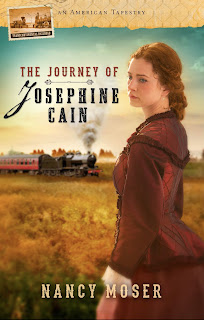Enter the Transcontinental Railroad project. Up until this
time, if you wanted to travel from coast to coast, you could take a train as
far as Council Bluffs, Iowa or Sacramento, California. Then you’d have to get
off the train and go overland by stagecoach or wagon train. It would take six
arduous months over mountains, deserts, and rivers.
Before the war, in
August 1859, Abraham Lincoln was in Council Bluffs to check on some land that
was collateral for a debt, and met with Grenville Dodge where they discussed
the possibility of a transcontinental railroad stretching to the Pacific. They
stood together on a bluff and looked west, and Dodge (who would become a
brigadier general in the war) made a case for going directly across the prairie
of the Nebraska territory. Since there was no bridge over the Missouri River
between Council Bluffs and Omaha, it was logical to start the project in Omaha.
In 1862, after Lincoln became president, he signed the
Pacific Railway Act and created the Union Pacific Railroad. Then he instructed
the Union Pacific and Central Pacific to construct America’s first
transcontinental railroad connecting Omaha and Sacramento, the Central Pacific
heading east, and the Union Pacific heading west. Bonuses were given for miles
of track laid, and promises of land for towns was enticing. A lot was at stake
for many, many people.
Work started in 1865 and was completed in May 1869 at
Promontory Summit, Utah. During those four grueling years ex-Confederate
soldiers worked side by side with ex-Union soldiers—and ex-slaves. Imagine
that. A year earlier they were killing each other. It’s astonishing. And it
wasn’t just Americans who worked on the project. Tens of thousands of
immigrants left their homelands to work on the railroad. On the Central Pacific
line Chinese workers were the prominent work force, and on the Union Pacific, the
Irish led the way.
 Men were paid varying
wages according to their job: $2.50-4.00, or an average of $90/month. Yet the
railroad deducted $20/month for food and board. The workers endured long days
of backbreaking work, rough living conditions, harsh weather, and the threat of
accidents and Indian attacks. Plus, as the railroads entered the Wild West,
they came into contact with many people who’d come west to escape iffy pasts
and held the law in disdain. Outlaws, shysters, murderers, and con men. Along
the way, Hell on Wheel towns followed the crews—just like they’d followed the
soldiers in the war—offering booze, gambling, and prostitution.
Men were paid varying
wages according to their job: $2.50-4.00, or an average of $90/month. Yet the
railroad deducted $20/month for food and board. The workers endured long days
of backbreaking work, rough living conditions, harsh weather, and the threat of
accidents and Indian attacks. Plus, as the railroads entered the Wild West,
they came into contact with many people who’d come west to escape iffy pasts
and held the law in disdain. Outlaws, shysters, murderers, and con men. Along
the way, Hell on Wheel towns followed the crews—just like they’d followed the
soldiers in the war—offering booze, gambling, and prostitution.
Why did the men do the work? It gave them food in their
bellies, money in their pockets, and even more than that, pride in working
toward something big, a project many called impossible. Because of their
dedication and courage that six month trip from Omaha to Sacramento was cut down
to a few days!
With all this drama and passion in the air it’s not
surprising that a pampered general’s daughter from Washington D.C. would find
herself a fish out of water. My character Josephine Cain has some choices to
make when she is assailed with these rough experiences along the rails. She can
choose to run home to what she knows, marry a family friend, and continue life
according to the status quo. Or she can cower and be intimidated by the strange
new world of the West. Or . . . she can be challenged by the possibilities, and
tap into the strong woman she never knew she was. Guess which choice Josephine
makes . . .
Come along on this amazing journey of discovery, courage,
and faith and be a part of the American dream!
Read an excerpt from The Journey of Josephine Cain here. Buy it at your favorite bookstores: Amazon, Barnes & Noble, or Christian Book . It's available in paperback or eBook.
Check out Josephine's storyboard on Pinterest. and loads of 1860's fashion here!
Check out Josephine's storyboard on Pinterest. and loads of 1860's fashion here!







